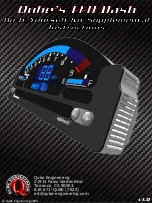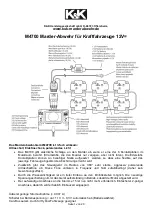
05
5-81
Non-Operational Conditions
of Forward/Reverse Parking
Distance Warning System
Forward/Reverse Parking Distance
Warning system may not operate
normally when:
•
Moisture is frozen to the sensor.
•
Sensor is covered with foreign matter,
such as snow or water, or the sensor
cover is blocked.
There is a possibility of Forward/
Reverse Parking Distance Warning
system malfunction when:
•
Driving on uneven road surfaces such
as unpaved roads, gravel, bumps, or
gradient.
•
Objects generating excessive
noise such as vehicle horns, loud
motorcycle engines, or truck air
brakes can interfere with the sensor.
•
Heavy rain or water spray is present.
•
Wireless transmitters or mobile
phones are present near the sensor.
•
The sensor is covered with snow.
•
Any non-factory equipment or
accessories have been installed, or if
the vehicle bumper height or sensor
installation has been modified.
Detecting range may decrease
when:
•
Outside air temperature is extremely
hot or cold.
The following objects may not be
recognized by the sensor:
•
Sharp or slim objects such as ropes,
chains or small poles.
•
Objects, which tend to absorb sensor
frequency such as clothes, spongy
material or snow.
•
Undetectable objects smaller than 100
cm (40 in) and narrower than 14 cm (6
in) in diameter.
WARNING
Your new vehicle warranty does not
cover any accidents or damage to the
vehicle or injuries to its occupants
related to Forward/Reverse Parking
Distance Warning system. Always drive
safely and cautiously.
Forward/Reverse Parking
Distance Warning System
Precautions
•
Forward/Reverse Parking Distance
Warning system may not sound
consistently depending on the speed
and shapes of the objects detected.
•
Forward/Reverse Parking Distance
Warning system may malfunction if
the vehicle bumper height or sensor
installation has been modified or
damaged. Any non-factory installed
equipment or accessories may also
interfere with the sensor performance.
•
The sensor may not recognize objects
less than 30 cm (12 in) from the
sensor, or it may sense an incorrect
distance. Use caution.
•
When the sensor is frozen or stained
with snow, dirt, or water, the sensor
may be inoperative until the stains are
removed using a soft cloth.
•
Do not push, scratch or strike the
sensor. Sensor damage could occur.
•
Do not spray the sensors or its
surrounding area directly with a high
pressure washer. Shock applied from
high pressure water may cause the
device to not operate normally.
















































